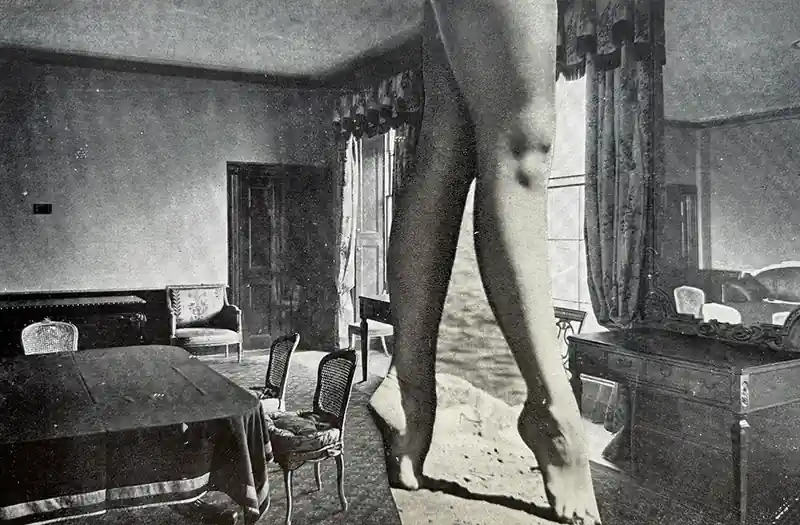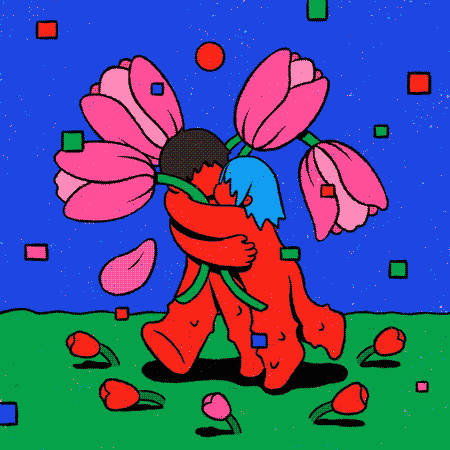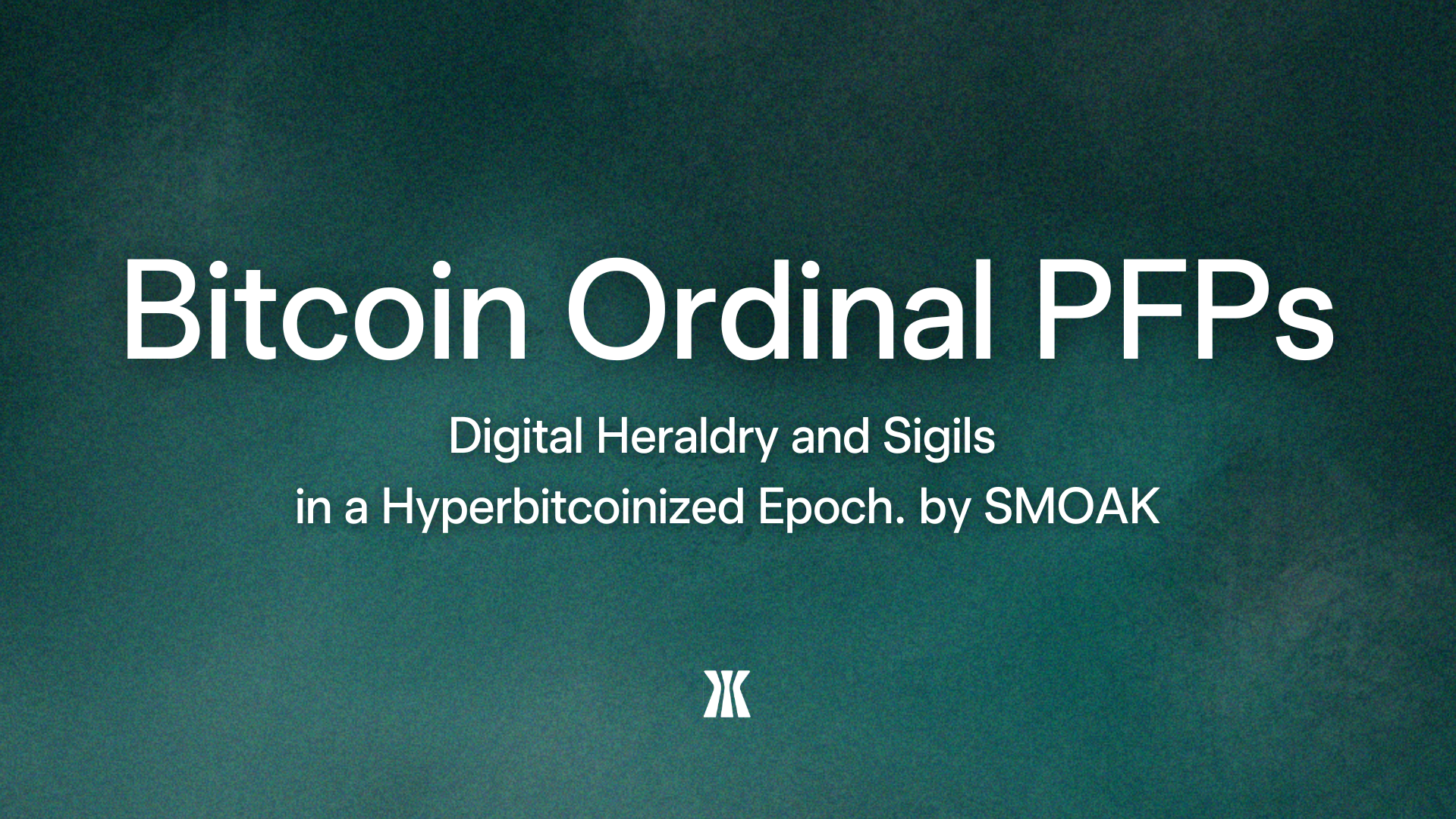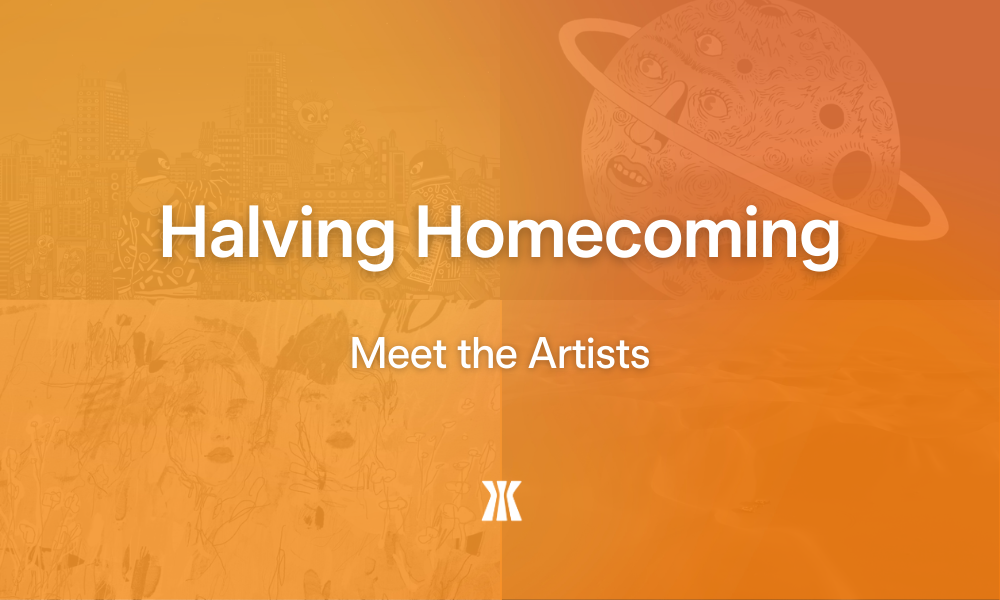The female form has been a timeless subject throughout art history, symbolizing beauty, fertility, and grace, also reflecting the complexities of human emotion and identity. From Leonardo da Vinci’s Vitruvian Woman to Gustav Klimt’s The Kiss, artists have explored the female body as both a muse and a symbol. In Venus of Urbino, Titian's portrayal of the reclining nude portrays classical beauty, but also challenges the viewer to consider the tension between the public and private aspects of femininity.
In more contemporary works, such as Cindy Sherman’s Untitled Film Stills, the artist reimagines the female form by subverting traditional roles and presenting a series of self-portraits that question gender, identity, and the constructed nature of femininity. These iconic works have set the stage for endless reinterpretations of the female form, making it a timeless and ever-evolving subject in the arts.
Meet five Gamma Partner Artists who also use the female form in their artwork, each bringing their unique perspective and creative vision to this enduring theme.
Sherie Ngigi
Sherie Ngigi, a photographer whose work explores the delicate balance between vulnerability and strength through the lens of the female form. Sherie’s photography is deeply rooted in her personal experiences, yet she aims to transcend the individual to touch on universal themes. “I balance intimacy and universality by grounding my work in deeply personal experiences while using the female form as a symbol of shared human stories,” she explains. Her approach often involves self-portraits and raw, emotional expressions that invite viewers into private moments of vulnerability and transformation. But Sherie also uses archetypes, metaphors, and abstract aesthetics to elevate these intimate moments into something timeless, allowing audiences to reflect on their own lives and emotions.
Her work challenges societal perceptions of femininity by rejecting traditional ideals of perfection and embracing vulnerability, transformation, and contradiction. A prime example is her portrait I Live for the Applause, where she confronts the societal pressure to perform and conform, exposing the internal conflict that comes with seeking external validation. “I challenge societal ideas of femininity by exposing the pressure to perform, please, and conform for validation,” Sherie shares. Through her work, she captures the complex layers of womanhood, both timeless and deeply rooted in contemporary issues such as the performance of identity and the commodification of self in today's world.
Sherie’s exploration of identity is also reflected in the reactions her work provokes. “Comments such as ‘I didn’t realise it was you’—it’s unsettling but powerful,” she says, reflecting on how society often relies on beauty or identity markers to connect with others. When stripped of these markers, people often find themselves unsure of how to engage with an image, a notion Sherie challenges by confronting the viewer with a stripped-down reality. Her portrayal of women, both timeless and contemporary, acts as a mirror reflecting the eternal complexities of womanhood, while engaging with modern-day pressures.
A recurring composition in Sherie’s work is the centering of her subjects, often with the face taking prominence. “The face often takes center stage in my work, reinforcing the idea of being observed, judged, or on display,” she says, highlighting the complex dynamics between the subject and viewer. This positioning challenges the viewer to reflect on their role in this dynamic, questioning the gaze and the weight of societal expectations placed on the female form.
Sherie contrasts her approach to photography with her use of video, where the female form comes to life through movement and time. “Photography captures still moments and carefully composed shots, creating space for quiet reflection,” she explains, allowing the viewer to project their own experiences onto the image. In video, however, “unfolding gestures—whether slow and deliberate or sudden and jarring—focus on transformation and change.” Video brings an immediacy and urgency to the viewer, drawing them into the process of becoming, of change in motion.
Ultimately, Sherie’s work is about provoking deep reflection and emotional connection. Through her exploration of identity, femininity, and transformation, she challenges societal norms and invites the viewer to question their own perceptions, ultimately expanding the dialogue around the female form and its complex role in both art and society.

Michelle Thompson
Collage artist Michelle Thompson has a unique way of using the female form to invite a personal connection with her audience, evoking emotions and narratives that are both individual and universal. Her approach to portraying the female body is deeply rooted in tension—between visibility and anonymity, celebration and critique. "By censoring faces and repurposing found imagery, I invite the viewer to project their own emotions and narratives onto the work," she explains. This method creates a fascinating dialogue between the form and the viewer, where femininity is celebrated, but beauty standards, identity, and representation in pop culture are subtly questioned.
In her work, Michelle balances intimacy with universality by allowing the viewer space to engage with the pieces on a personal level. "I work with the female form simply because I find it beautiful. By using found images and censoring certain details, I aim to create visually compelling pieces that allow the viewer to appreciate the form in a more open, personal way." Her art is not bound by any particular narrative; instead, it provides a platform for the viewer to project their own feelings and reflections, creating a shared experience that feels both intimate and expansive.
What Michelle finds most rewarding is the variety of responses her work evokes. "I've been surprised by how differently people interpret my work. Some focus on the anonymity created by censoring faces, seeing it as a comment on identity, while others simply appreciate the beauty of the images." This range of interpretations is something she finds fascinating. "It’s always interesting to hear how people connect with the work in ways I hadn’t expected," she says, noting that she prefers not to offer too much explanation herself. Instead, she leaves space for the viewer to form their own connections, fostering a personal and reflective experience.
When it comes to whether her portrayals of women are timeless or reflections of current issues, Michelle admits that her creative process is driven by what feels beautiful to her in the moment. "I’m simply creating art that feels beautiful to me, using the female form because I find it inspiring. As an illustrator, my work is often prescribed, but with my personal pieces, I’m making what I love—sometimes simply because two pieces of paper just work together." While she doesn't necessarily set out to comment on contemporary issues, her work naturally reflects them, simply because the materials she works with are often shaped by current pop culture and societal norms.
A recurring theme in Michelle's collages is the censorship of the face or certain parts of the body. "I often censor the face or certain parts of the body because I’m more focused on the form itself," she explains. For Michelle, the beauty of the female form lies in its shapes and compositions, and by obscuring the face, she invites the viewer to focus on these elements rather than the identity of the subject. "I love the beauty of the female form but prefer not to always show nudity, and hiding the face allows the viewer to connect with the shape and composition, rather than focusing on identity."
Her choice of medium—relying on found images and materials—further shapes the perception of the female form in her work. "The perception of the female form is shaped by what’s available to me," Michelle says, emphasizing the process of creating art from what already exists. Instead of starting from scratch, she assembles pieces that are already imbued with meaning, letting those materials guide how the female form is represented. This approach allows her to create works that feel organic and open to interpretation, rather than fixed or pre-determined.
Ultimately, Michelle’s goal is simple: she wants her work to evoke a personal connection. "I want the viewer or collector to appreciate the beauty of the form and feel a personal connection to the work," she says. Whether sparking reflection or simply offering enjoyment, her collages are meant to be appreciated on the viewer's own terms, without a heavy interpretation. Through her work, she invites everyone to connect with the female form in a way that feels true to their own experiences and perceptions.

Reset
Digital painter Reset’s work serves as both a reflection and a challenge to societal narratives surrounding women. By using the female body as a medium to tell a story of finding beauty in decay, of navigating oppression towards freedom, Reset aims to provoke deeper introspection in her audience. "I want the viewer to be challenged on a deeper level uncovering their own stories," she explains. Her art is often imbued with a sense of defiance, with much of it aimed at subverting the traditional narratives of meekness and victimhood that society often imposes on women. Through her portrayals, Reset invites viewers to reflect on their personal journeys, perhaps finding parallels to their own experiences.
For Reset, intimacy and universality are not elements she seeks to balance in her work—she believes they are inherently intertwined. "I feel that it is all intimate," she says, "I can only represent the body through my own standpoint." Her work is a reflection of her own cultural and social conditioning, and she acknowledges that this personal perspective shapes how she depicts the female form. Rather than trying to represent a universal experience, she views her work as an invitation for others to engage in a shared conversation, to reflect on their own experiences, and to find personal meaning in what she creates. “I cannot speak on behalf of anyone else. I can simply invite others to share their own experience and hope that my work can be viewed as a starting point for that conversation,” she notes.
Reset’s work is deeply political, influenced by feminist artists, and is often an attempt to subvert the stereotypes that society bombards us with daily. The poses of the female form, the use of color, and even the inclusion of street art elements are all intentional choices to provoke subconscious reactions and challenge entrenched perceptions of femininity. "Art is political, in that it can be used to untangle and challenge our viewpoints," she asserts. Her own experiences—particularly working with women who have survived violence and trafficking—have deeply informed her art. She is committed to shining a light on these often-unheard stories, creating pieces that focus on the struggles of breaking free from oppressive societal expectations.
The impact of her work has been profound for many viewers. Reset has received messages from people who found solace or inspiration in her art. One particularly moving response came from an individual who had been struggling with suicidal thoughts but found a connection to her piece Exhale, a homage to a woman Reset worked with. "Connecting with people on that level has been the most rewarding experience for me," she shares, reflecting on how art can spark important conversations and bring about real change. This personal connection with her audience is one of the reasons Reset continues to create art, believing that through storytelling, we can begin to shift perspectives and initiate meaningful dialogue.
While Reset’s portrayal of women is deeply embedded in her own cultural and personal experiences, she also sees her work as having a timeless quality. "There is my interpretation of what I am trying to achieve and then there is the viewer’s, which might be completely different," she reflects. Her work is steeped in culture and time, yet she believes that the connection to universal archetypes and the collective unconscious gives it a timeless resonance, allowing it to transcend any particular era or trend.
Throughout her work, Reset uses recurring symbols and gestures to deepen the impact of her pieces. Bright colors and broad brushstrokes contrast with the darker subject matter, creating a sense of tension and release. Skulls, a nod to her street art background, and butterflies, which hold personal significance from a transformative trip in her youth, frequently appear in her art. These symbols are powerful metaphors for life, death, and transformation—recurrent themes in her exploration of the female form and its complexities.
Reset’s choice of medium also plays a significant role in how the female form is perceived in her art. She embraces a wide range of techniques and technologies, seeing her use of different mediums as an extension of the freedom she advocates through her art. "I believe in freedom through mediums and not being tied down," she says, reflecting her broader message of liberation through creative expression. This freedom to experiment with various mediums allows her to push the boundaries of how the female form is represented, creating works that are dynamic and ever-evolving.
Ultimately, Reset's goal is simple yet powerful: "If I can make the viewer feel something, then I have achieved my goal." Whether it's starting a conversation about violence against women or creating a space for personal reflection, she hopes her work sparks change and encourages people to think critically about the world around them. Through her art, Reset aims to be part of the transformation she wishes to see in society, one piece at a time.

Nietta
Illustrator Nietta’s art is a journey through the complex emotions and narratives surrounding the female form, each piece aiming to evoke a visceral response from the viewer. “I want my art to make people feel—whether it’s strength, vulnerability, defiance, or deep introspection,” she explains. Through works like HallowQueen, which portrays raw emotional struggle and perseverance, and Beyond Blue, which delves into deeper emotional states, Nietta taps into the full spectrum of the female experience. The vibrant energy of Strawberry Shortcake, on the other hand, celebrates confidence and femininity. With each piece, Nietta strives to reveal what lies beneath the surface, exposing layers of transformation, identity, and resilience.
Nietta's approach to balancing intimacy with universality lies in her ability to imbue each work with personal emotions while ensuring that viewers can see themselves reflected in the art. She points to characters like Jojo, Rani, Freya, and Samie from Trailblazing Digital Dreams, each of whom holds their own unique energy, whether fierce, introspective, or ethereal. These characters, though deeply personal, resonate with emotions that many can relate to. "Every portrait carries personal meaning, but the emotions are universal," she says. Similarly, Earth Angel Flora and Earth Angel Tania connect femininity with nature, reinforcing themes of renewal and transformation—ideas that transcend time and place.
Through her depictions of femininity, Nietta challenges societal norms and invites viewers to reconsider the often rigid expectations placed on women. "Femininity is often boxed into rigid expectations—delicate, nurturing, or controlled," she observes. Her work seeks to present women as complex, layered beings, defying the passive stereotypes often imposed on them. Characters like Freya and Rani exude quiet strength, while Earth Angel Tania reconnects femininity with nature’s untamed spirit. Works like Beyond Blue confront internal struggles, highlighting the invisible battles that women face, inviting viewers to reflect on their own understanding of femininity, strength, and freedom.
Nietta has been pleasantly surprised by the responses to her work, particularly the emotional reactions that her art often elicits. One viewer described HallowQueen as "a silent scream," seeing it as a visual representation of the internal struggles that words cannot express. The intensity of the gazes in portraits like Jojo and Samie has also left a lasting impression on viewers, who feel as though the portraits are looking through them rather than at them. Strawberry Shortcake has sparked conversations around the duality of femininity, exploring how playfulness and power can coexist in the same space. Nietta cherishes these responses, appreciating how they remind her that art is not just about what she puts into it, but also about what others see and feel in it.
Nietta sees her portrayal of women as both timeless and reflective of current issues. While her work captures the timeless qualities of femininity—strength, vulnerability, and transformation—it also addresses contemporary conversations. Beyond Blue delves into the growing dialogue surrounding mental health, challenging the expectation that women must always appear composed. Pieces like Earth Angel Flora and Earth Angel Tania reclaim the connection between women and nature, resonating with today’s push for sustainability and self-reconnection. At the same time, some of her work, like Jojo and Freya, carries a modern energy, shaped by today’s evolving ideas of identity and beauty. "Some pieces feel deeply grounded in the now," she reflects, "while others tap into something more universal, making them feel as relevant today as they would in any era."
Throughout her exploration of the female form, Nietta employs recurring symbols, gestures, and compositions to deepen the meaning of her art. Florals, seen in works like Earth Angel Flora and Earth Angel Tania, symbolize growth, resilience, and the connection between femininity and nature. Eyes are another important symbol in her work, especially in portraits like Jojo and Samie, where their intensity forces the viewer to engage beyond the surface. Bandages in HallowQueen represent internal battles and the process of breaking free from constraints. These symbols are not merely aesthetic choices; they reflect the complexities of identity, struggle, and strength that shape the female experience.
Nietta’s choice of medium also plays a critical role in how the female form is perceived in her work. "The medium changes how the female form speaks," she explains. Digital art allows her to push the details and emotions in her portraits, creating pieces that feel striking and intimate. In HallowQueen, the stark contrast of black and white strips the work down to its raw vulnerability, while in Strawberry Shortcake, color becomes an essential part of the expression, portraying femininity in a bold and unapologetic way. "Each piece is shaped not just by what I create, but how I choose to make you feel it," Nietta notes, highlighting how the medium complements the emotional resonance of her work.
Ultimately, Nietta hopes to leave a lasting impact on her viewers and collectors. "I want my work to stay with people—not just as an image, but as a feeling," she says. Whether it’s the quiet strength of Freya, the raw emotion of Beyond Blue, or the defiance in HallowQueen, she wants her work to connect with viewers on a personal level. For collectors, she hopes her art becomes something that resonates deeply, reflecting a part of themselves. If her work can make someone pause, reflect, or feel seen, Nietta believes she has achieved her goal. Through her art, she strives to spark thought, conversation, and a deeper understanding of the many facets of femininity.

Empress Trash
Empress Trash's art is a potent exploration of the complexities surrounding the female form, using it as a means to reclaim both body and identity in the face of societal constraints. In her work, she evokes a wide range of emotions—seduction, mystery, awe, strength, and fear—while portraying women as subjects rather than objects. The underlying message is the reclamation of her own body, a process deeply rooted in past trauma and life experiences. As her self-perception grows and evolves, so too does her art, reflecting her ongoing journey to find authenticity in this transformation.
The tension between intimacy and universality runs through her work. Nudity, by its nature, draws intimate connections, yet for Empress Trash, it serves as a confrontation with shame, a testament to the complex relationship women have with their own vulnerability. Though highly sexual, her depictions of the feminine nude form are far from simple expressions of desire. They are powerful statements that the female body deserves to be seen not only in the world but within the mind and art, in a way that affirms its existence and strength. The pull between craving intimacy and struggling with it is a universal theme that resonates deeply through her work.
Her art also challenges the societal perceptions of femininity by taking inspiration from classical depictions of women—curved, imperfect, and real. This exploration intersects with her AI work, where she confronts the biases ingrained in these platforms. Early on, AI tools like Midjourney rejected terms such as "curvy" or "BBW" while accepting "skinny" or "pinup." This shaped Empress Trash’s approach, making her challenge these biases and explore alternative ways to describe the body types she wanted to highlight. It’s through this process that her work engages viewers in a reflection on how beauty is defined and who gets to make those definitions. In her defiance, she pushes against the constraints of technology and societal norms, offering a space where femininity can be seen and appreciated for what it truly is.
The reactions to her art have been surprising, particularly the way men purchase her work for their daughters or share that their wives approve of her nudes. This humbling, and often humorous, feedback underscores the deeper respect her art commands. It’s not just seen—it’s revered. This unexpected validation has driven her to continue pushing boundaries, not just for herself, but for what femininity can represent in art.
Empress Trash’s portrayal of women is both timeless and reflective of the current era. Her work captures the messy, raw reality of being a woman today, honoring the strength, desires, and struggles women face while simultaneously paying homage to the women who came before her and those who will follow. The resulting art is an ongoing conversation that stretches beyond the present moment, blending past, present, and future.
The recurring themes in her work reflect both the solitary strength of women and their deep connection to the Earth. Whether it’s through the depiction of women alone or the surreal blending of landscapes and bodies, her art mirrors the complex relationship between nature, identity, and autonomy. Bright, explosive colors become emotional expressions that help tell the stories of the women she depicts, from pop stars to queens to the spooky bitches who inspire her. Technology, especially AI, amplifies these themes, merging the divine feminine with cultural references and modern-day spirituality.
Her diverse use of mediums—from traditional painting in Procreate or Rebelle to glitch art in Photomosh and AI collaborations—reflects the multifaceted nature of femininity. The process, much like the experiences of being a woman, is fluid, complex, and ever-changing. Through these mediums, Empress Trash challenges the notion of what femininity is supposed to look like, proving that it isn’t bound by traditional definitions or expectations. For her, art is inherently feminine because she is a woman, not because others define it for her. Her work, playful yet defiant, offers a critique of the traditional and the new, especially in realms like technology and crypto, areas often deemed beyond the reach of women.
Ultimately, Empress Trash’s impact on her viewers is a quiet but powerful one. She doesn’t focus too much on what happens once her work leaves her hands, trusting that the right people will connect with it. She’s content with the idea that her art will evoke emotion, spark reflection, or simply offer a moment of pause. For Empress Trash, the art itself is a lifeline, a constant that sustains her as she continues to evolve, and she trusts that the audience will find her work when it’s meant for them.





